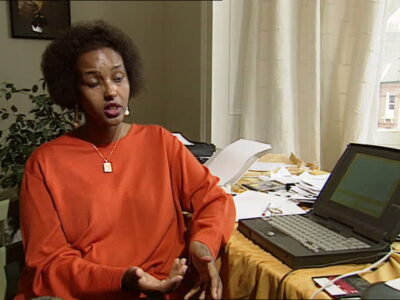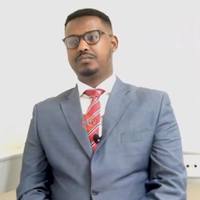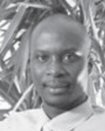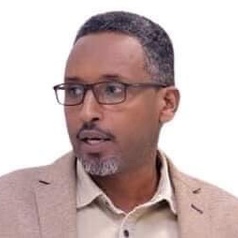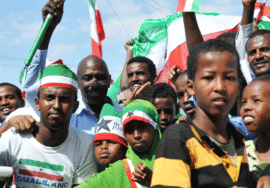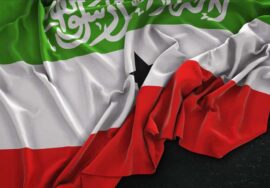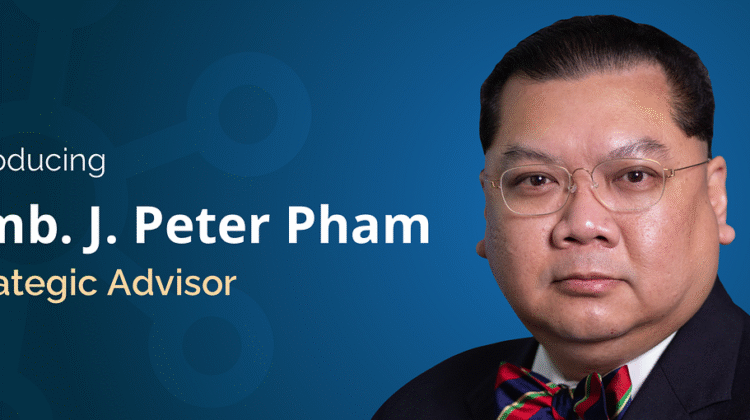
The Somaliland Exception
The Somaliland Exception
In the more than two decades since the collapse of the last entity that could be reasonably described as the central government of Somalia, the Texas-sized territory has become the byword for state failure, stubbornly resisting no less than 14 attempts to reconstitute a national government. e current internationally backed effort, the unelected and ineffectual Transitional Federal Government (TFG), just barely manages to maintain a presence in a few of the districts of its bombed-out capital, Mogadishu—and that much only thanks to the presence of the approximately 10,000 Ugandan and Burundian troops that make up the African Union Mission in Somalia (AMISOM).2 e foreign security force is needed because, while TFG politicians, led by their president and parliamentary speaker, dicker endlessly over the few remaining assets of the former Somali Democratic Republic, large sections of the country have fallen under the de facto control of the Harakat al-Shabaab al-Mujahideen (“Movement of Warrior Youth,” better known as al-Shabaab). is militant Islamist movement was declared a “specially designated global terrorist” by the U.S. Department of State in 2008; a “listed terrorist organization” by the Australian government the following year; and in 2010, a “proscribed organization” under the Terrorism Act by the British government and a “listed terrorist group” by the Canadian government. Meanwhile, taking advantage of the absence of any authority capable of opposing them, Somali pirates have wreaked havoc with global commerce from the Gulf of Aden to the Gujarati Coast of India as emboldened marauders seize ships in order to extort ransoms that continue to spiral upward into the millions of dollars. Additionally, in July 2011, amid the worst drought in East Africa in 60 years, the United Nations (UN) declared two Somali areas to be in a state of famine and warned that the crisis could quickly engulf all eight regions of southern Somalia and spread beyond, putting more than 12 million people across the Horn of Africa at risk of starvation. In the midst of this dire landscape, it is all the more remarkable that an apparent oasis of stability has nonetheless emerged: the self-declared Republic of Somaliland, located in the northwestern part of the former Somalia, occupying a territory coterminous with the onetime British protectorate. Since they broke away from the rest of Somalia in 1991,Somalilanders have managed to not only establish external security and internal stability—enough of the latter, in fact, to have developed what is arguably the most democratic politics in the subregion—but have done so without the benefit of international recognition of their existence or much foreign development assistance. us the lessons from Somaliland’s successful peace- and state-building processes may be applicable not only to efforts to bring stability to other Somali areas, but also to post-conflict situations elsewhere around the globe.
A Brief Introduction to the Somali People
Somali culture has traditionally been a pastoral, nomadic one, with an overwhelming majority of the population engaged in the herding of camels (the prestige wealth par excellence), sheep, goats, and, in a few favorable areas, cattle. Somali social identity is historically rooted in paternal descent (tol), meticulously memorial ized in genealogies (abtirsiinyo, “reckoning of ancestors”), which determines each individual’s exact place in society. At the apices of this structure are the “clan-families” (qabiil). According to the most generally accepted divisions, the following are the major clan-families among the Somali: Darod, Dir, Hawiye, Isaq, Digil, and Rahanweyn. The first four, historically predominantly nomadic pastoralists, are reckoned “noble” (bilis) clans, while the Digil and Rahanweyn, also known collectively as “Digil Mirifle,” who were traditionally cultivators and agro-pastoralists in the fertile area between the Shabelle and Juba rivers, occupy a second tier in Somali society. The latter also speak a dialect of Somali, af-maymay, which is so distinct from the af-maxaa of the former that it is “properly a not mutually intelligible language,” according to British anthropologist I. M. Lewis. A third tier also exists in Somali social hierarchy, consisting of minority clans whose members, known collectively as Sab, historically carried out occupations such as metalworking and tanning which, in the eyes of the nomadic “noble clans,” rendered them ritually unclean.7 e significance of the Somali social identity for politics cannot be understated. As Lewis once put it: It is of the first importance to appreciate that a Somali genealogy is not a mere family tree recording the historical descent and connections of a particular individual or group. Whatever its historical significance, in the sphere of politics its importance lies in the fact that it represents the social divisions of people into corporate political groups. By reference to his ancestors, a man’s relations with others are defined, and his position in Somali society as a whole, determined. us an understanding of the political relations between groups requires a knowledge of their genealogical relationships. Since the clan-families were generally too large and too widely dispersed to act as politically cohesive units—although in more recent years, the advent of mass communications and social media have resulted in rendering the segmentary solidarity of their members a significant factor in national politics9—they were subdivided into clans (qolo) and subclans by descent in the male line from an eponymous ancestor at the head of each clan lineage. Within the clan, the most clearly defined subsidiary group is an individual’s “primary lineage”(jilib),which also represents the limits of exogamy, and within which an individual’s primary identification is with what has been described as the “diya-paying group” (from the Arabic diya, “blood-wealth”). The diya-paying group, consisting as it does of kinsmen with collective responsibility for one another with respect to exogenous actors, is the most basic and stable unit of Somali social organization. The unity of the group is founded not only on its members’ shared descent from a common ancestor four to eight generations back, but also a formal political contract (heer) between themselves so that if a member kills or injures someone outside the group, the other members are jointly responsible for that action and will collectively make reparation. Conversely, if one of its members is injured or killed, the diya-paying group (reer) will either collectively seek vengeance or share in whatever compensation is paid. While these relations are rooted in familial ties, historically, Somali society has demonstrated itself to be highly adaptable, being open to both the formation of new alliances and even the emergence of new identities.10 Lewis, arguably the foremost living authority on Somali history and culture, has observed that “the vital importance of this grouping, in an environment in which the pressure of population on sparse environmental resources is acute, and where fighting over access to water and pasture is common, can hardly be overemphasized ”since it is “upon his diya-paying group, and potentially on wider circles of clansmen within his clan-family, that the individual ultimately depends for the security of his person and property.” If Somali identity is firmly rooted in clan relationships, it is also closely linked with Muslim faith. As one contemporary Somali scholar observes, “If one listens to a Somali individual talking, one would hear many Islamic concepts and Islamic vocabulary even though that person is not conducting a religious ceremony—this shows the extent to which Islam is present within Somali culture.” The geographical proximity to and commercial connections with the Arabian Peninsula have profoundly shaped the Somali. Not only were they early converts to Islam, virtually exclusively adhering to Sunni Islam and following the Shāfi‘ī school (madhab) of jurisprudence (which, although conservative, is open to a variety of liberal views regarding practice),13 but the four “noble” clan families have traditionally claimed descent from Arab forebears connected with the family of the Prophet Muhammad. More than any other factor, this cultural background explains the decision of postindependence Somalia to join the Arab League in 1974. Islam among the Somali historically found its expression in various movements, the most popular being the Sufi brotherhoods (tarīqa, plural turuq),especially that of the Qadiriyya order, although the Ahmadiyya order, introduced into Somali lands in the nineteenth century, was also influential, and the Salihiyya order also present. While traditional Islamic schools and scholars (ulamā) played a role as focal points for rudimentary political opposition to colonial rule, especially in Italian Somalia, their role in the politics of the Somali clan structure was neither institutionalized nor particularly prominent. In part, this is because historically, sharia was not especially entrenched in Somalia; being largely pastoralists, the Somali relied more on xeer (customary law) than on religious prescriptions.
Historical Background Until the 1960s,
“Somalia” never existed as a political entity, notwithstanding the general cultural and linguistic unity of the Somali people. As Lewis observes,“ They were a nation, not a state…. The six major divisions of the nation (the Dir, Isaq, Darod, etc.) did not combine together to confront the world, nor did they regularly act as stable or autonomous political units within the Somali political system.”16 European colonial expansion into East Africa in the 1880s added yet another layer of division to the Somali, partitioning the lands they inhabited into five separate territories: the Protectorate of French Somaliland (Côte Français des Somalis), based in Djibouti; the British Protectorate of Somaliland, with Hargeisa as its principal town; the Italian colony (Somalia Italiana), eventually centered on Mogadishu; the Northern Frontier District of the British Colony and Protectorate of Kenya; and the area absorbed by Ethiopia that became known as the Ogaden after its most prominent Somali residents. e vastly different subsequent experiences of colonialism in each of the regions created by the European powers were to have significant long-term consequences. The Italians sought to settle and transform their colony by encouraging citizens to grow newly introduced commercial crops on their plantations, like bananas, which would, in turn, be exported to Italy by Italian companies that were awarded monopolies. Especially after the Fascists came to power in Italy, there was an emphasis on the distinction between “natives ”and their “natural rulers,” and authority was increasingly centralized. The colonial regime set about supplanting xeer and other traditional Somali usages with institutions imported from Italy. In contrast, the British originally did not even intend to assume control over more than the coast, which they viewed as necessary for the security of their Yemeni holdings from potential French expansionism out of Djibouti as well as being a good source of mutton for the garrison they stationed in Aden. Accordingly, the British extended their reach into the hinterland in response to the protracted uprising against the various foreign invaders led by the “Mad Mullah,” Sayyid Muhammad ‘Abdille Hassan. British authorities went so far as to ban Christian missionaries from Somaliland and otherwise actively discouraged settlers. Lewis notes that when he arrived there in 1955, “the entire Protectorate establishment consisted of less than 200 senior officials, of whom 25 were locally recruited Somalis”—preferring to leave such governance as was needed on a day-to-day basis in the hands of Somali elders. Somalia itself was born out of a union between the British Protectorate of Somaliland, which became independent as the State of Somaliland on 26 June 1960,and the former colonial territory then being administered by Italy as a United Nations trust, which received its independence five days later. Under the influence of the African nationalism fashionable during the period, the two independent states entered into a union, even though, common language and religion notwithstanding, they had undergone very different colonial experiences and never had the occasion to develop a common national identity. Very little thought was apparently given, either by enthused Somali nationalists or their international supporters, as to whether the European-style centralized state that was hastily created was necessarily appropriate for the diffuse nature of Somali society. In fact, the merger was so rushed that a number of international lawn scholars have subsequently questioned the legal validity of the act of Union itself. Somalilanders quickly regretted the entire exercise, in no small measure because of the discrimination that the predominantly Isaq
Northerners suffered at the hands of the numerically superior members of clans from other regions. Within less than a year of the union, when its draft constitution was put to a vote, most Somalilanders boycotted the referendum; of those who cast a ballot, a solid majority rejected the charter. Lacking wide spread political legitimacy, Somali politics quickly degenerated so that by the time the army commander, Muhammad Siyad Barre, seized power in October 1969,“ithad become increasingly clear that Somali parliamentary democracy had become a travesty, an elaborate, rarefied game with little relevance to the daily challenges facing the population.” A year after taking over, Siyad Barre proclaimed the Somali Democratic Republic, an officially Marxist state, and tried to stamp out clan identity as an anachronistic barrier to progress that ought to be replaced by nationalism and “scientific socialism. ” The non-kinship term jaalle (“friend” or “comrade”) was introduced to replace the traditional term of polite address ina’adeer (“cousin”). Traditional clan elders had their positions abolished or, at the very least, subsumed into the bureaucratic structure of the state. At the height of the regime’s “modernization” campaign, it became a criminal offense to even refer to one’s own or another’s clan identity. Given how deeply rooted the clan identity was (and still is), it was not surprising that Siyad Barre not only failed in his efforts to efface the bonds, but he himself fell back on his own kinship networks. With the exception of his long-time defense minister and sometime prime minister, Mohamed Ali Samantar, a Sab whose humble origins made it highly unlikely that he could ever lead a coup d’ état against his benefactor, Siyad Barre’s most trusted ministers came from his own Darod clan-family: the Marehan clan of his paternal relations; the Dhulbahante clan of his son-in-law, Ahmed Suleiman Abdulle (head of the notorious National Security Service); and the Ogaden clan of his maternal relatives. The dictator’s “MOD” coalition—so-called because of the initials of the three clans involved— led him into the disastrous Ogaden War (1977–78), a clumsy attempt to exploit the chaos of the Ethiopian revolution to seize the territory in the Haud Plateau that Siyad Barre’s irredentist kinsfolk viewed as “Western Somalia.” The influx of more than a million Ogadeni refugees following the Somali military’s humiliating defeat at the hands of the Ethiopians and their Soviet and Cuban allies created enormous problems for the Somali state. These challenges were only exacerbated when half of the Ogadeni refugees were placed in refugee camps erected by the regime in the middle of Somaliland,the historical territory of their traditional rivals, the Isaq. When the Ogadeni, who were already restive because of political discrimination and the intentional neglect of development in their region, objected, they were violently repressed.
The Somali National Movement
In response to these abuses, Isaq in the diaspora had been meeting to discuss their options. At various times, they attempted to engage with other dissident groups, including even the Somali Salvation Democratic Front (SSDF). is organization was led by military officers from the Majeerteen clan of the Darod who had mounted an unsuccessful coup attempt against the regime in April 1978 and whose surviving members had set up a guerrilla force based across the border in Ethiopia. Ultimately, however, following a conference held at the International Student Union of London University on 18 October 1981, this Isaq group founded the Somali National Movement (SNM). Over the next decade, these two opposition organizations, and others like them, all motivated by grievances that had their origins in Siyad Barre’s clumsy management of the clan dynamics, would bring down not just the dictatorship, but the Somali state itself. Although the SNM was born out of the profound sense of marginalization felt by the Isaq and other northern clans and subclans, its initial objective was not to break up the union, but, after overthrowing Siyad Barre, to decentralize power in conformity with the basic diffuse structure of the traditional Somali society. e official communiqué from the founding conference affirmed that the challenge was “to find a lasting solution to the question of clanism without, in the process, destroying Somali society as we know it.” e group’s founders envisioned a future dispensation where power was devolved to regions. At the very time the SNM was organizing abroad, back in Somaliland, a group of young people, including physicians, teachers, and other professionals, had tried to organize themselves voluntarily to provide the social services that the regime was neglecting in their region. Unfortunately, this public-spirited initiative was viewed with suspicion by government officials who arrested some of those involved as “subversives.” After brutal interrogations, the prisoners were put on trial before one of the notorious “national security courts” in Hargeisa in February 1982. When supporters of the accused—all of whom were condemned to long prison sentences—protested the sham proceedings, regime forces responded by firing indiscriminately into the crowd, killing a number of demonstrators. Subsequently, the Siyad Barre government imposed even more oppressive measures upon the region. Following the crackdown, SNM leaders made contact with Ethiopian authorities and, like their SSDF counterparts before them, received permission to open a base on Ethiopian soil. From there, SNM recruiters fanned out to their own clan territories along the border to appeal to their fellow clansmen or lineage members for support. Given the regime’s heavy-handed reaction to dissent, the response the new movement received was overwhelming. Isaq troops in the Somali military readily deserted to join the SNM, while some officers remained behind, ostensibly loyal to the regime, but secretly providing support to the opposition. Expatriate workers in Saudi Arabia and the Persian Gulf states sent contributions to help pay SNM fighters, which made joining the burgeoning opposition even more attractive to unemployed northern youth. SNM fighters were able to live off the land, supported by their clans. As the 1980s wore on, the fight became a full-scale guerrilla war, with increasingly bold SNM attacks provoking even more brutal reprisals against local civilian populations, which only served to drive more people into joining the anti-regime forces. Things got so far out of hand that, in 1988, Siyad Barre’s air force actually perpetrates done of the most bizarre war crimes in the annals of armed conflict: taking off from the airport in Hargeisa, the squadron bombed the runway it had just left as well as some 90 percent of the surrounding city before flying back to the capital. Subsequently, the city was systematically razed and its ruins strewn with landmines; of its pre conflict population of almost 300,000, fewer than 2,000 remained. In the end,300,000 Somalilanders fled into Ethiopia, while hundreds of thousands more became internally displaced. The refugee camps in Ethiopia proved to be somewhat serendipitous for the SNM and, indeed, for the future political evolution of Somaliland. As its leadership focused its attention on an ever-widening war to topple Siyad Barre, the SNM turned over a number of administrative functions—including the distribution of food and other aid, the adjudication of disputes, and the recruitment of new fighters—to the elders of the Isaq and their allied clans. A traditional council of elders (guurti)was eventually formed to advise the SNM’s governing central committee. e partnership of the elected leadership of what had become a veritable national liberation movement—many of whom had been in the diaspora—and traditional clan leaders gave the SNM a broad legitimacy that the regime in Mogadishu ultimately found impossible to counter.
Renewed Independence (1991–2001)
By early 1990, Siyad Barre had lost control of most of northern Somalia due to the separate advances of the Isaq-led SNM in the northwest and the largely Majeerteen SSDF in the northeast. By late January of the following year, the dictator had packed himself inside the last functioning tank belonging to his once-powerful military and headed for the Kenyan border, ignominiously abandoning Mogadishu to yet another brace of clan-based forces, the predominantly Hawiye militias of Muhammad Farah ‘Aideed and Ali Mahdi. In Somaliland, unlike other parts of Somalia, conflict was averted following the collapse of regime forces. Although some reprisals took place, the SNM and Isaq clan leaders generally made an effort to reach out to representatives of other clans in the territory, including the Darod/Harti (Dhulbahante and Warsangeli subclans) in the east and the Dir (Gadabuursi and Ise subclans) in the west. In January 1991, for example, as rebel forces approached the main Gadabuursi town, Borama, a cease-fire was negotiated through the efforts of a senior officer who was one of the few members of that subclan in the SNM leadership. Gadabuursi elders were invited to join other leaders from all of the region’s clans to attend a conference the following month, which formalized a cease-fire across Somaliland. At this point, there were no moves toward secession. However, when Hawiye leader Ali Mahdi—who did not even control all of Mogadishu—unilaterally declared himself “president of the whole of Somalia from Zeila to Ras Kamboni,” the northern clansmen saw history repeating itself. With broad popular support, elders representing the various clans in Somaliland met in Burao for a clan conference (shir beleed). On 18 May 1991, the forum agreed to a resolution that annulled the northern territory’s merger with the former Italian colony and declared that it would revert to the sovereign status it had enjoyed upon the achievement of independence from Great Britain and within the borders of the same. e then-serving chairman of the SNM, Abdirahman Ahmed Ali (known as “Tuur, ”meaning hunchback),was appointed by consensus to be interim president of Somaliland for a period of two years, with the SNM’s executive committee serving as his cabinet and the movement’s central committee acting as a temporary legislature. In January 1993, the Somaliland clans sent representatives to Borama for another shir beleed. Interestingly, while the apportionment of seats at this and the previous conference was determined along clan lines in a rough attempt to reflect the demographics of the territory, the actual decision making was by consensus. Moreover, this conference constituted within itself a governing council of elders (guurti) whose members were themselves representatives of councils at the clan level. e national guurti then proceeded to meet for much longer than the month originally planned. e assembly did not, in fact, adjourn until May. In that time, it achieved some astonishing results and,it should be noted, did so with very little international support. I. M. Lewis observed that the results “are all the more impressive when contrasted with the much less effective, elaborate, high-cost peace and reconstruction conferences organized externally for Somalia as a whole by the United Nations and other international bodies.” The Borama conference first, and perhaps most extraordinarily, certified that the SNM had accomplished its mission of liberating the country, thanked it for its service, and transferred power away from it. Amazingly, the SNM accepted the decision and was then dissolved.In a singular act of self-abnegation,the victorious liberation movement not only did not cling to power, but it did not even reinvent itself as a political party to compete with others. Second, the conference dealt with issues of representation and power sharing by institutionalizing clans and their leadership into the system of governance. In a creative mix of Western and traditional institutions, the elders produced an interim Peace Charter and a Transitional National Charter.
The Peace Charter set up a legal system that restored xeer as the basis of positive law while also acknowledging the role that Islamic jurisprudence plays in an overwhelmingly Muslim society. The National Charter provide the country, thanked it for its service, and transferred power away from it. Amazingly, the SNM accepted the decision and was then dissolved. In a singular act of self-abnegation, the victorious liberation movement not only did not cling to power, but it did not even reinvent itself as a political party to compete with others. Second, the conference dealt with issues of representation and power sharing by institutionalizing clans and their leadership into the system of governance.In a creative mix of Western and traditional institutions, the elders produced an interim Peace Charter and a Transitional National Charter. The Peace Charter set up a legal system that restored xeer as the basis of positive law while also acknowledging the role that Islamic jurisprudence plays in an overwhelmingly Muslim the foundations for future progress by establishing governmental institutions, demobilizing the former guerrillas, setting up a rudimentary revenue system, and otherwise preparing the groundwork for future economic development, conflicts between certain opportunistic political figures pushed Somaliland to the brink of civil war between 1994 and 1996. In the midst of the tensions, constitutional draftsmanship was placed on the back burner and the government extended its mandate twice. A national reconciliation conference, which met in Hargeisa from October 1996 until February 1997, patched up the differences and adopted another interim constitution that increased representation of clan and political minorities in the two houses of parliament and provided for a multiparty system. One of the major accomplishments of Egal’s time in office that deserves to be singled out is the demobilization of former fighters— both SNM and those belonging to clan militias—and their disarmament. A key component of the effort was the creation of a broad-based Somaliland National Demobilization Commission (NDC)based on the president’s recognition of “the need to ensure that the demobilisation effort be led by representatives of all clans and that it not be perceived as an imposed state or mono-clan structure.” Interestingly, the lack of international support led the government to adopt a community-based strategy with the active mobilization of clan elders, religious leaders, and local nongovernmental organizations (NGOs) to carry out the demobilization campaign. Elders from all clans and subclans were recruited to oversee the removal of heavy weapons from populated areas and to verify their destruction, or at least cantonment in remote locations. The removal of weapons from urban areas was followed by the removal of militias, with a number of those demobilized being retrained as members of a national police force following a six-month course at an encampment near Maandheera, halfway between Hargeisa and the port of Berbera.
State Building (2001–2011)
Before his unexpected death in 2002, Egal finally saw the completion of the drafting of a permanent constitution to replace the long-standing temporary charter. e new document was approved by 97 percent of the voters in a May 2001 referendum. Much like the National Charter, the Somaliland constitution provided for an executive branch ofgovernment, consisting of a directly elected president and vice president and appointed ministers; a bicameral legislature, with an elected house of representatives and an upper chamber of elders, the guurti; and an independent judiciary. After Egal’s death, his vice president, Dahir Riyale Kahin, succeeded to the presidency. Kahin— who hails from the Gadabuursi, rather than the majority Isaq—was elected in his own right in a close election in April 2003. Despite the margin of victory for the incumbent being just 80 votes out of nearly half a million cast, the dispute was settled peaceably through the courts. Multiparty elections for the house of representatives were held in September 2005, which gave the president’s Ururka dimuqraadiga ummadda bahawday (“For Unity, Democracy, and Independence,” UDUB) party just 33 of the 82 seats, with the balance split between two other parties, the KULMIYE Nabad, Midnimo iyo horumar (“Peace, Unity, and Development,” KULMIYE), and the Ururka Caddaalada iyo Daryeelka (“For Justice and Development,”UCID). Without significant external support, the Somalilanders found that the demobilization of the former SNM fighters, the formation of new national defense and security services, and the extraordinary resettlement of more than 1 million refugees and internally displaced persons fostered the internal consolidation of their renascent polity. Additionally, the establishment of independent newspapers, radio stations, and a host of local NGOs and other civic organizations reinforced the nation-building exercise. e stable environment thus created helped facilitate substantial investments by both local and diaspora businessmen who have built, among other achievements, a telecommunications infrastructure that is more developed than that of some of Somaliland’s neighbors. Coca-Cola has even announced the opening of a $10 million bottling plant in Hargeisa. One needs to single out the educational sector as not only a bridge between Somalilanders in the diaspora and their kinsmen at home, but also an important impetus for the reconstruction and development of the region. The showcase of this is Amoud University, the first institution of its kind in Somaliland, which opened in Borama in 1997. e school took its name from a high school that was the first institution of its kind under the British protectorate and was the alma mater for many distinguished Somalilanders. The university was founded as a modest joint effort by local citizens, who assumed responsibility for the initiative, and their relations abroad, especially in the Middle East, who raised money for it and sent textbooks and other supplies. e institution opened with just two academic departments: education and business administration. The former was created because of the dire need for teachers in the country; the latter because of the opportunities for employment in the private sector as well as the possibility of graduates starting their own businesses. Even a noted Somali critic of Somaliland’s quest for independence has praised Amoud for having “underscored the preciousness of investing in collective projects that strengthen common values and deepen peace” and “given the population confidence that local resources can be mobilized to address development needs.”42 Subsequently, universities have been established in Hargeisa (2000), Burco (2004), and Berbera (2009, although this institution has its origins in an older College of Fisheries and Maritime Management). Unfortunately, Somaliland’s political progress stalled for a period in recent years due to the repeated postponement of pre the identical and legislative elections beginning in 2008. From this author’s firsthand observation, it would appear that while the crisis was homegrown, outside actors, especially the European Commission (EC) and the NGO Interpeace, exacerbated the situation, however unintentionally. First, the nomination of the National Election Commission (NEC) by the president and the opposition-controlled parliament took longer than expected. the government in Hargeisa, the EC, and Interpeace reached an agreement to undertake a new voter registration initiative throughout Somaliland that would result in the issuance of a combination voter and national identification card—an admitted important symbolic goal for a nascent state. Complicating the exercise further, the NEC, with the agreement of Somaliland’s political parties, decided that the card would carry biometric data in addition to a photograph of the bearer. e whole process only began in October 2008 and was soon thereafter interrupted by suicide bombings by al-Shabaab. When the process resumed, it was carried out with great enthusiasm and dispatch by both government and donors, so much so that fingerprint data was not collected from more than half of those registered and multiple registrations clearly took place in a number of localities. Eventually, an internal compromise worked out in late September 2009byall three of Somaliland’s political parties (with encouragement from Ethiopia and the United Kingdom) extended the term of the president and vice president until one month after the holding of elections—at a date not specified—thus preventing escalation of the crisis into violence, but still not holding elections. While the election problem is rooted in Somaliland’s internal politics, the outside actors did their local partners no favors by backing a process that was highly problematic from the onset and then, in the case of Interpeace, becoming embroiled as a party to the expanded conflict. Fortunately, good sense and some timely mediation by the traditional clan elders won the day, and the internationally monitored presidential election in June 2010 was praised by the foreign observers for having been “peaceful, without major incident and generally [meeting] international standards.” The result was the defeat of incumbent Dahir Riyale Kahin, the election of Ahmed Mohamed Mohamoud(“Silanyo”),a British-trained economist who had served as chairman of the SNM from 1982 until 1990, and a smooth transition between the two—a virtually unheard of occurrence in the region. In the view of a number of legal and political scholars, this success reinforced Somaliland’s case for international recognition that has thus far eluded it. As a recent report by the South Africa-based Brenthurst Foundation concluded, Recognition of Somaliland would be a most cost-effective means to ensure security in an otherwise troubled and problematic region. Moreover, at a time when “ungoverned spaces” have emerged as a major source of global concern, not least in this region of the world, it is deeply ironic that the international community should deny itself the opportunity to extend the reach of global governance in a way that would be beneficial both to itself, and to the people of Somaliland. For Africa, Somaliland’s recognition should not threaten a“Pandora’s box” of secessionist claims in other states. Instead it offers a means to positively change the incentives for better governance, not only for Somaliland, but also in south-central Somalia.
A Somali Fix for the Somali Problem
Although none are likely to risk the loss of face by ever admitting it, the example of Somaliland’s progress by leveraging the strength and resilience of traditional institutions to build a sustainable polity amid the chaos of the former Somalia has not been lost on Somalis in other regions.While they lack the historical and international legal arguments that Somalilanders can claim, Darod clan members in the northeastern promontory of Somalia have also demonstrated the success of the building-block model for the country and the wisdom of working with the deeply ingrained clan identities among the Somali. In 1998, tired of being held back by the constant violence and overall lack of social and political progress in central and southern Somalia, traditional clan elders of the Darod clan-family’s Harti clan—including its Dhulbahante, Majeerteen, and Warsangeli subgroups—meeting in the town of Garowe opted to undertake a regional state formation process of their own, establishing an autonomous administration for what they termed the “Puntland State of Somalia. “After extensive consultations within the Darod/Harti clans and subclans, an interim charter was adopted. is charter provided for a parliament whose members were chosen on a clan basis and who, in turn, elected a regional president, the first being Abdullahi Yusuf Ahmed who, in 2004,went onto become, much less successfully, president of the TFG. Unlike Somaliland, however, which has opted tore assert its independence, Puntland’s constitution simultaneously supports the notion of a federal Somalia and asserts the region’s right to negotiate the terms of union with any eventual national government. Other less developed political entities are also emerging out of processes currently at work else where among the Somali. In the central regions of Galguduud and Mudug,for example, the local residents set up several years ago something they call the “Galmudug State,”complete wih its own website. In 2009, they elected a veteran of the old Somali military, Colonel Mohamed Ahmed Alin, to a three-year term as the second president of what describes itself as “a secular, decentralized state.” An analogous process is taking place in Jubaland along the frontier with Kenya, apparently with the encouragement of the government of the latter, which wants a buffer zone between its territory and the areas controlled by al-Shabaab in southern Somalia. In April 2011, it was announced that a new autonomous authority, “Azania,” had been inaugurated with the TFG’s own resigned defense minister, Mohamed Abdi Mohamed (“Gandhi”),as its first president. Meanwhile, another self-declared administration, “Himan Iyo Heeb, ”originally established in 2008 by Habar Gidir clansmen in central Somalia, north of Mogadishu, has apparently become active again. ere are similar stirrings among the Hawiye in the Benadir region around Mogadishu and among the Digil/Rahanweyn clans farther south. Whatever their respective shortcomings, by leveraging the legitimacy they enjoyed by virtue of deeply rooted kinship ties as well as historical and geographical bonds, traditional leaders in Somaliland—and, to varying extents, their counterparts in other Somali regions—have managed to deliver to their constituents a relatively high degree of peace, security, economic progress, and rule of law, despite the lack of international recognition or much outside involvement. Put another way, they have combined sociologist Max Weber’s “traditional legitimacy” and “legal right” with service provision in order to establish a sustainable political arrangement, “an order beside the state.” As counterinsurgency theorist David Kilcullen has observed, Somalia is virtually a laboratory test case, with the south acting as a control group against the experiment in the north. We have the same ethnic groups, in some cases the same clans or even the same people, coming out of the same civil war and the same famine and humanitarian disaster, resulting from the collapse of the same state, yet you see completely different results arising from a bottom-up peace-building process based on local-level rule of law versus a top-down approach based on putting in place a “grand bargain” at the elite level. The role played by the clans has been vital to the relatively successful efforts by the Somaliland government to avoid both major internal conflict and embroilment in the violence affecting most of southern Somalia. It was traditional clan elders who negotiated questions of political representation in key forums. In circumstances where elections were impossible, representatives were designated by clan units from among their members through a deliberative process in which all adult males had an opportunity to participate and where decisions were made on a consensual basis. e resulting social contract enjoys a profound political and social legitimacy that derives from broad buy-in across many groups. Another trait that the authorities in Somaliland and those in several of the de facto autonomous regions of Somalia—albeit to a lesser extent in the case of the latter—share with each other, but not with the TFG in Mogadishu, has been the fact that they have been largely self-supporting with respect to governmental finances. It has been argued that one of the most significant factors undermining state formation in Africa has been a limited revenue base, that is, a dependence on foreign aid and/or natural resource extraction for revenue. roughout the world, the experience has been that taxation as a means of raising revenue not only provided income for the state, but also facilitated a greater cohesion between the state and its stakeholders. In contrast, the virtual absence of taxation in postcolonial Africa has resulted in regimes that are largely decoupled from their societies. From this perspective, it is most telling that the most advanced state-building project among the Somalis has been in Somaliland, where the government collects taxes and license fees from business and real estate owners and imposes duties on the trade in khat (the mildly narcotic evergreen leaf chewed by many in the region) as well as imports and exports through the port of Berbera. The government of Somaliland has actually adopted a supply-side approach by managing to increase revenue by more than halving the sales and income tax rates (from 12 to 5 percent and from as muchas25to10percent,respectively).Responding to this success, the World Bank has undertaken to train tax officials, and the U.S. Agency for International Development(USAID) has agreed to build 10 inland revenue centers across the region. The funds raised have been spent in a manner that could hardly be more transparent: the introduction last year of universal free primary and intermediate schooling through the elimination of parent fees. Somaliland also makes its own contribution to the collective security of the international community. Not only has its minuscule coast guard kept Somaliland’s 460-mile coastline largely free from piracy, but the region has even been deemed secure enough that, in December 2009, the Obama administration transferred two ethnic Somalis from the terrorist detention facility at Guantanamo Bay, Cuba, to Hargeisa rather than risk sending them to the insecure conditions presided over by the TFG in Mogadishu. In a way, the latter development could have been anticipated given the many accounts published by journalists over the years of the eagerness of senior U.S. Department of Defense civilian and military officials for a policy change that would enable them to shift to engaging Somaliland over security issues. Perhaps most importantly in the context of the rising tide of Islamist militancy in southern and central Somalia is the fact that, as one of the most astute observers of contemporary Somali society has noted, this reliance—especially in Somaliland—on the older system of clan elders and the respect they command “has served as something of a mediating force in managing pragmatic interaction between custom and tradition, Islam and the secular realm of modern nationalism,” leading to a unique situation where “Islam may be pre empting and/or containing Islamism.” The consequence of having an organic relationship between Somali culture and tradition and Islam appears to assure a stabilizing, rather than disruptive, role for religion in society in general and religion and politics in particular. In Somaliland, for example, while the population is almost exclusively Sunni Muslims and the shahāda (the Muslim profession of the oneness of God and the acceptance of Muhammad as God’s final prophet) is emblazoned on the flag, sharia is only one of the three sources of jurisprudence in the region’s courts, alongside secular legislation and xeer. On the other hand, given the limited resources of the Somaliland government, Quranic schools play an important role in basic education. Alongside these popular institutions stand equally well-received secular charities like Hargeisa’s Edna Adan Maternity Hospital, founded in 2002 by Edna Adan Ismail, the former foreign minister of Somaliland, which provides a higher standard of care than available anywhere else in the Somali lands for maternity and infant conditions as well as diagnosis and treatment for HIV/AIDS and sexually transmitted diseases and general medical conditions. Thanks to this integrative approach, the northern clans have largely managed to “domesticate” the challenge of political Islam in a manner that their southern counterparts would do well to emulate. Encouragingly, there have been indications that the international community may finally be coming to the same realization. In September 2010, Ambassador Johnnie Carson, U.S. assistant secretary of state for African affairs, announced a “dual-track policy” that included greater engagement with government officials from Somaliland and other regions with an eye toward “looking for ways to strengthen their capacity both to govern and to deliver services to their people.” Likewise, after long refusing to even acknowledge their existence, the African Union’s Peace and Security Council has directed its commission chairperson, Jean Ping, to “broaden consultations with Somaliland and Puntland as part of the overall efforts to promote stability and further peace and reconciliation in Somalia.” Of course, it remains to be seen whether or not concrete policies that would actually implement these directives are developed and executed.
Conclusion:
Some Lessons for Post conflict State Building e failure of Somalia’s TFG and its predecessors to prevail over their opponents and bring an end to the conflict has less to do with the complaints often voiced regarding a lack of outside assistance, especially of the military kind, than other factors over which external actors can have little positive effect. Specifically, if the regime fighting an insurgency is unable or unwilling to take the steps to achieve internal political legitimacy, no outside intervention will be able to help it to “victory,” as even a cursory review of the relationship between legitimacy and military force in civil wars will confirm. In this regard, it would have been helpful if someone had recalled the insight of I. M.Lewis from 2004: If further progress is to be achieved in state formation, Somali politicians will surely have to come out of “denial” and start seriously exploring how clan and lineage ties can be utilized positively. Perhaps they could learn from their nomadic kinsmen who unashamedly celebrate these traditional institutions. Here a less Eurocentric and less evolutionary view of lineage institutions by Western commentators, social scientists, and bureaucrats might help to create a more productive environment for rethinking clanship (i.e.agnation) positively. Nor is it especially productive to continue the pretense that Somalia is still a state when it has long ceased to function as one. The only result this has produced has been to encourage the rent seeking behaviour and corruption of TFG officials without in any way advancing the ostensible objective of restoring a modicum of security and governance to even all 16 districts of Mogadishu. Somaliland’s leaders, in contrast, achieved peace and established the foundations of a viable polity precisely because they understood and used indigenous mechanisms and traditional institutions in their state-building enterprise. By engaging clan elders, religious figures, members of the vibrant Somali business community, and civil society actors in a fairly inclusive process, they laid a political and social governance foundation for success despite challenging conditions. By relying on practices hallowed from time immemorial and familiar to the populace, they also purchased the time and gained the political space that was needed to make advances that might have otherwise been too difficult in the immediate aftermath of the conflict. Even the disadvantages they had to overcome—the lack of both natural resources and ready access to donor budgetary assistance —proved to be blessings in disguise since they forced the government to depend instead on local revenue streams and, consequently, to be more attentive to constituent groups. As it turns out, this very dynamic “appears to have been at the heart of the development of modern, representative governments in Europe,” according to political economist Nicholas Eubank. Overall, Somaliland’s experience illustrates how a process that is viewed as legitimate and supported by the populace can also address the international community’s interests about issues ranging from humanitarian concerns to maritime piracy to transnational terrorism. The political and social conditions present in Somaliland in the wake of the implosion of the former Somali state are far from readily generalizable to other post conflict situations. However, it is also true that, as Michael Walls has written, “at a time when developments in the southern and central Somali territories provide such cause for despair, it is important to recognize and attempt to learn from the different reality that pertains in Somaliland, where local resources have been effectively employed in the cause of achieving a lasting peace and what appears to be a viable system of democracy.” Moreover, as analyst Seth Kaplan has summarized it, “ e UN, Western governments, and donors have tried repeatedly to build a strong central government—the kind of entity that they are most comfortable dealing with—in defiance of local sociopolitical dynamics and regional history.” Despite the abundant evidence clearly indicating that bottom-up efforts, especially when they reinforce the connection between legitimate local nonstate structures to state or proto state institutions, have a greater chance of success, the inability or even unwillingness to act on this knowledge in Phase IV and Phase V stabilizing and rebuilding operations results in the repeated capture of otherwise well-intended efforts by self-appointed political leaders whose lack of legitimacy— traditional or electoral—contributed to provoking the crisis that necessitated the intervention in the first place. e real shame is that this all-too-often-repeated error has, in recent years alone, not only wasted billions of dollars, but also shattered countless lives in some of the most vulnerable corners of the globe. Fortunately, the experience of Somaliland underscores the fact that, even in the middle of the most unpromising of circumstances, there are always choices, and the right ones can deliver some truly exceptional results.
By J. Peter Pham




